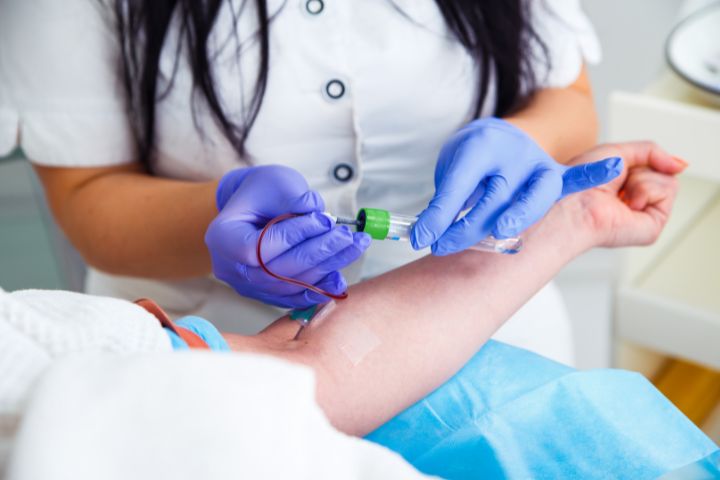Northeast Medical Institute - New Haven Campus Phlebotomy Course & Cna Class Things To Know Before You Get This
Wiki Article
Northeast Medical Institute - New Haven Campus Phlebotomy Course & Cna Class Can Be Fun For Anyone
Table of ContentsA Biased View of Northeast Medical Institute - New Haven Campus Phlebotomy Course & Cna ClassAn Unbiased View of Northeast Medical Institute - New Haven Campus Phlebotomy Course & Cna ClassNot known Factual Statements About Northeast Medical Institute - New Haven Campus Phlebotomy Course & Cna Class The smart Trick of Northeast Medical Institute - New Haven Campus Phlebotomy Course & Cna Class That Nobody is DiscussingThe smart Trick of Northeast Medical Institute - New Haven Campus Phlebotomy Course & Cna Class That Nobody is DiscussingNot known Incorrect Statements About Northeast Medical Institute - New Haven Campus Phlebotomy Course & Cna Class
Nonetheless, making use of such devices should be come with by various other infection avoidance and control practices, and training in their use. Not all safety and security tools are applicable to phlebotomy. Before picking a safety-engineered device, users must thoroughly investigate available devices to identify their suitable use, compatibility with existing phlebotomy methods, and efficiency in shielding team and people (12, 33).For setups with reduced sources, cost is a driving aspect in procurement of safety-engineered gadgets. Where safety-engineered devices are not readily available, knowledgeable usage of a needle and syringe is appropriate.
labelling); transportation conditions; interpretation of results for scientific administration. In an outpatient division or center, provide a committed phlebotomy cubicle containing: a tidy surface area with two chairs (one for the phlebotomist and the other for the client); a hand wash basin with soap, running water and paper towels; alcohol hand rub. In the blood-sampling space for an outpatient department or facility, supply a comfortable reclining couch with an arm rest.
The Northeast Medical Institute - New Haven Campus Phlebotomy Course & Cna Class PDFs
Ensure that the indications for blood sampling are clearly defined, either in a written method or in documented guidelines (e.g. in a laboratory form). Gather all the tools needed for the treatment and location it within secure and easy reach on a tray or trolley, making sure that all the products are clearly visible.Where the patient is adult and aware, comply with the steps detailed below. Introduce yourself to the client, and ask the client to mention their complete name. Inspect that the research laboratory type matches the individual's identity (i.e. match the client's details with the lab type, to make certain accurate identification). Ask whether the license has allergic reactions, phobias or has ever collapsed during previous shots or blood attracts.
Make the individual comfy in a supine placement (if feasible). The person has a right to refuse a test at any time before the blood sampling, so it is vital to make sure that the individual has actually comprehended the procedure - PCT Courses.
The 45-Second Trick For Northeast Medical Institute - New Haven Campus Phlebotomy Course & Cna Class
Expand the individual's arm and check the antecubital fossa or forearm. Locate a vein of a great dimension that is noticeable, straight and clear.DO NOT put the needle where capillaries are drawing away, because this raises the opportunity of a haematoma. Finding the blood vessel will aid in determining the proper dimension of needle.
Haemolysis, contamination and visibility of intravenous liquid and medicine can all alter the results (39. Nursing staff and physicians may access central venous lines for samplings adhering to protocols. Samplings from main lines bring a danger of contamination or wrong research laboratory test outcomes. It serves, yet not ideal, to injure samplings when initial presenting an in-dwelling venous tool, before attaching the cannula to the intravenous fluids.
Northeast Medical Institute - New Haven Campus Phlebotomy Course & Cna Class Things To Know Before You Get This
Allow the location to dry. Failing to permit enough get in touch with time boosts the danger of contamination. DO NOT touch the cleaned up site; specifically, DO NOT put a finger over the capillary to direct the shaft of the subjected needle. It the site is touched, repeat the sanitation. Execute venepuncture as follows.Ask the patient to form a fist so the capillaries are much more prominent. Enter the vein promptly at a 30 level angle or much less, and proceed to present the needle along the blood vessel at the most convenient angle of entrance - Phlebotomy Classes. Once enough blood has actually been accumulated, launch the tourniquet BEFORE withdrawing the needle
The Ultimate Guide To Northeast Medical Institute - New Haven Campus Phlebotomy Course & Cna Class
Withdraw her comment is here the needle delicately and use mild pressure to the website with a clean gauze or dry cotton-wool sphere. Ask the client to hold the gauze or cotton wool in position, with the arm expanded and raised. Ask the patient NOT to bend the arm, because doing so triggers a haematoma.
The Buzz on Northeast Medical Institute - New Haven Campus Phlebotomy Course & Cna Class
Where possible, keep the tubes in a shelf and relocate the shelf in the direction of you - https://myanimelist.net/profile/northeastmed. If the example tube does not have a rubber stopper, inject very slowly into the tube as lessening the stress and rate used to transfer the specimen lowers the risk of haemolysis.
Report this wiki page